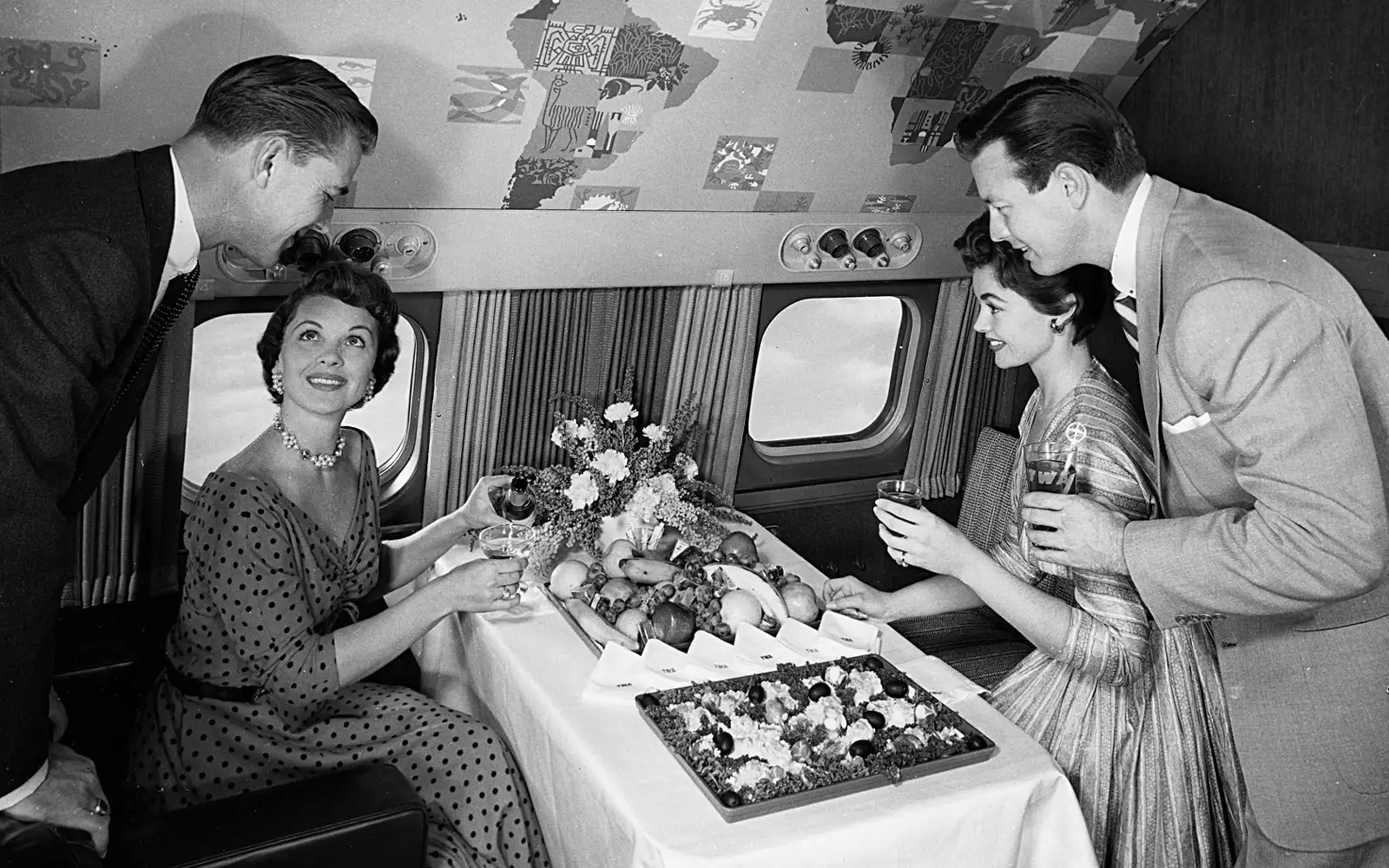What Travel Looked Like the Decade You Were Born
Getting from point A to point B has not always been as easy as online options and rideshare applications. It was a surprisingly recent event when the average American traded in the old horse-and-carriage look for a car, plane, or even a private jet.
What was it like to travel at the turn of the century? If you were heading out for a trans-Atlantic trip at the very beginning of the 20th century, there was one option: boat. Travelers planning a cross-country trip had several options: carriage, car (for those who could afford one), rail, or electric trolley lines—especially as people moved from rural areas to cities.
At the beginning of the 1900s, leisure travel in general was something experienced exclusively by the wealthy and elite population. In the early-to-mid-20th century, trains and cars became steady favorites for getting around. The debut of regional airlines welcomed their first passengers in the 1920s, but the airline business didn’t see its real boom until several decades later. During the ’50s, a significant portion of the American population purchased a set of wheels, giving them the opportunity to hit the open road and pursue the American dream.
By 1960, airports had expanded globally to provide both international and domestic flights to passengers. Air travel became a luxury industry, and a transcontinental trip soon became nothing more than a short journey.
So, what’s next? The leisure travel industry has quite a legacy to fulfill—fancy a trip up to Mars, anyone? Here, we’ve outlined how travel (and specifically, transportation) has evolved over every decade of the 20th and 21st centuries.
1900s
The 1900s was all about that horse-and-carriage travel life. Horse-drawn carriages were the most popular mode of transport, as it was before cars became commonplace. In fact, roadways were not plentiful in the 1900s, so most travelers would follow the waterways (primarily rivers) to reach their destinations. This decade represents a much slower and more antiquated form of travel than what we came to associate with the rest of the 20th century.
1910s
Cross-continental travel became more prevalent in the 1910s as ocean liners surged in popularity. Sailing via steam ship was the only way to get to Europe. The most famous ocean liner of this decade, of course, was the Titanic. The Titanic was the largest ship in service at the time of its 1912 sailing, departing Southampton, England on April 10 and was due to arrive in New York City on April 17. At 11:40 p.m. on April 14, it collided with an iceberg and sank beneath the North Atlantic three hours later. Despite this tragedy, when the Titanic was constructed, it was the largest human-made moving object on the planet.
1920s
The roaring ’20s opened our eyes to the romance and excitement of travel. Railroads in the U.S. were expanded during World War II, and people were encouraged to hop on the train to visit out-of-state resorts. This decade also saw the middle class finally able to afford one of the most crucial travel luxuries: a car. Luxury trains were having a moment in Europe, even leading to the expansion of the Suez Canal to accommodate increased ocean liner traffic to popular destinations like Jamaica and the Bahamas.
1930s
The ’30s introduced planes into the mainstream travel scene. While commercial air travel was possible in the ’20s, flying remained a cramped experience, reserved for the wealthiest individuals. However, with the introduction of the Douglas DC-3, flight became more comfortable. The DC-3 was a revolutionary commercial airliner that was larger, more comfortable, and faster than previous models. The ’30s also marked the first decade to see trans-Atlantic flights, pioneered by Pan American Airways in 1939.
1940s & 1950s
The road trip heyday was in full swing in the ’40s, as cars grew increasingly luxurious. The introduction of the Interstate system in the 1950s helped facilitate smoother road trips and commutes, enhancing the road trip experience across America.
1960s
The ’60s marked the era of the Concorde. Enthusiasm for supersonic flight surged as France and Britain collaborated to develop this iconic aircraft, which represented a leap into the future of aviation. Although only 20 Concordes were made, and noise complaints limited their use, the legacy of supersonic flight continues to intrigue aviation enthusiasts nearly 20 years after their retirement.
1970s
Amtrak was incorporated in 1971, solidifying its brand in American travel. Initially servicing 43 states with various routes, Amtrak’s introduction of long-distance travel options began in 1975 with the fleet of Pullman-Standard Company Superliner cars, offering overnight accommodations and dining experiences.
1980s
The ’80s saw long-distance air travel become the norm. While earlier decades had witnessed commercial flight become more mainstream, by the ’80s, it was the go-to mode of transportation for long-haul journeys.
1990s & 2000s
The ’90s set the stage for hybrid vehicle adoption. The introduction of the Toyota Prius in 1997 paved the way for the success of various hybrid and electric vehicles, impacting not only road trippers but the commuting landscape for the average American.
2010s
The 2010s elevated air travel to new heights, with luxurious offerings from airlines that transformed how people experienced flying. Qatar Airways’ unveiling of their lavish Qsuites exemplified this trend, teaching luxury travelers that exceptional flight experiences extended beyond private jets.
2020s
While it’s too early to pinpoint the 2020 transportation fixation, the decade is poised to be recognized for commercial space travel. With plans from companies like SpaceX paving the way for future ventures, including the world’s first space hotel expected to open in 2027, commercialized space travel seems to be on the horizon.





